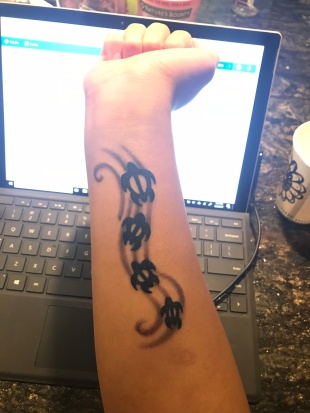So recently I got a tattoo, and I’m super proud of how it turned out. The design is four sea turtles swimming towards my wrist. People ask me all the time why I chose this tattoo, and I tell them how in Hawaiian culture, when kupuna (elderly people) die, their spirits come back to earth and they embody an animal so they can stay connected to their families and provide guidance even in the afterlife. This animal is called aumaku’a (protective family deity). Different animals symbolize different things. For example, mano (sharks) represent strength, power, protection and are very sacred to the Hawaiian people. Honu (turtles) represent endurance, health, long life, good luck, prosperity, and unity. Turtles are also navigators. Legend has it that turtles lead the Polynesians to the Hawaiian Islands thousands of years ago. Turtles have a natural sense of direction. They come to a beach to lay their eggs, leave, and then come back to the same exact spot years later after roaming the ocean. This is another reason I chose this tattoo, because I look to turtles for guidance and direction. Their intuition is something I really admire. When I leave Hawai’i, I get really “homesick” and sad, and my tattoo is there to remind me that Hawai’i will always be with me, even if I’m not physically there. And the turtles will always be there to help me find my way back home.
I got my tattoo done at Kealoha Designs in San Jose. (check out Andrew Kealoha’s work on yelp!!) He specializes in Polynesian and tribal tattoo designs. When I was in the parlor getting my tattoo done, I noticed some on his work framed on the wall. That got me thinking about the cultural meaning behind Polynesian tattoos and what each design represents. I did some research and I found some pretty interesting information that I wanted to share with you guys.
By Polynesian, I refer to the indigenous people of Oceania: Marquesans, Samoans, Niueans, Tongans, Cook Islanders, Hawaiian, Tahitians, Maori, etc. These people share many similar traits in their language, culture and beliefs because they all belong in the same language group: Malayo- Polynesian languages are a subgroup in the Austronesian Language group. The Malayo-Polynesian group is also divided into western, central, and eastern branches. The other branches include countries from southeast Asia such as the Philippines, Japan, Taiwan, Indonesia. Focusing on the Eastern Malayo-Polynesian group: it consists of the islands in Melanesia, Micronesia, and Polynesia.
In the Polynesian group, tattoos represented many characteristics of the person wearing it, such as personality, identity, status in society, genealogy, history, life story, etc. Getting tattooed with traditional methods was often an extremely painful process but it was considered a rite of passage for many men. Declining the tattoo or not finishing because of the pain could mean being seen as a disgrace or being hated by the tribe.
A tattoo has different meanings depending on where it is placed on the body. Also, the direction and relation in space of the tattoo means different things. This is because in Polynesian culture, humans are seen as children of heaven (Rangi) and Earth (Papa). Heaven and earth were once united, and legend says that it’s man’s ultimate quest to find that union again. Humans represented the connection between Rangi and Papa (heaven and earth). So tattoos placed in the upper body relates to spirituality and heaven, while tattoos in the lower body relates to the world and life on earth.
Body Parts:
- Head: Head is considered the contact point to Rangi. Tattoos here relate to themes of spirituality, knowledge, wisdom, intuition.
- Chest/ high trunk area: Tattoos here relate to themes of generosity, sincerity, honor, and reconciliation. This is because this area represents the space between Rangi and Papa, so it is extremely important to have balance in this area for harmony to exist between the two.
- Lower trunk/ Core: Themes of life energy, courage, procreation, independence, sexuality. Thigh tattoos relate to strength and marriage. Stomach/ navel tattoos relates to person’s mana and independence. (e.g. symbolic meaning of cutting umbilical cord). Independence is a highly valued trait in Polynesian culture.
- Upper arm/ shoulder: Themes of strength and bravery, represents warriors and chiefs.
- Lower arms/ hands: Themes of creativity, creation, and making things.
Different Symbols of Polynesian Tattoos and Their Meanings:
Shark teeth: Called “niho mano.” Sharks are very sacred to the Polynesian people. They represent strength, protection, guidance, ferocity, adaptability.
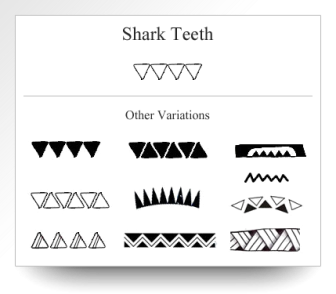
The Tiki: Human like figures that are semi-gods: often ancestors, chiefs, priests who became semi-gods after death. They serve as guardians, representing protection, fertility. One of the most important quality of the tiki is the eyes, which you’ll notice is often bigger than the other facial characteristics.
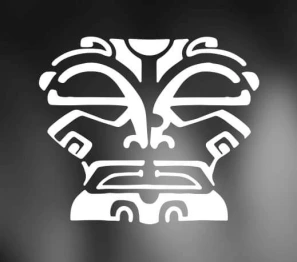
Lizards: Called mo’o in Hawaiian. Very powerful creatures who bring good luck but also bad luck, they have the ability to communicate between humans and gods who can access the invisible world. They can also bring death and bad omens to those who are disrespectful.
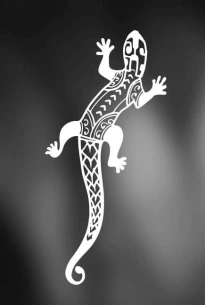
Stingrays: Stingrays represent adaptation, gracefulness, peacefulness, danger, agility, speed, stealth. Stingrays are good at blending in with their surroundings and hiding in the sand from their predators. So they are also a symbol of protection.
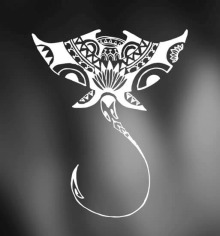
Ocean/ wave designs: The ocean is greatly respected because it is the Polynesian people’s source of life. It is their main source of food. So Polynesians understood how to take care of the ocean. They understood the balance of taking and giving to the ocean. It is also considered “a place of rest when they leave for their last voyage.” (Passage to death and beyond) Ocean waves represents life, change, and continuity through life: the flow of life and death and “the place beyond death, where the departed go to rest.”
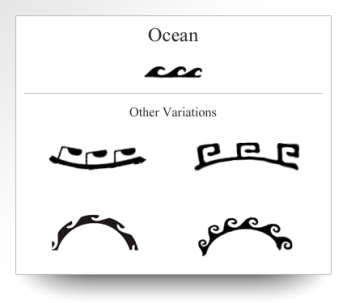
Spearhead: Represents the warrior nature, courage, fighter.
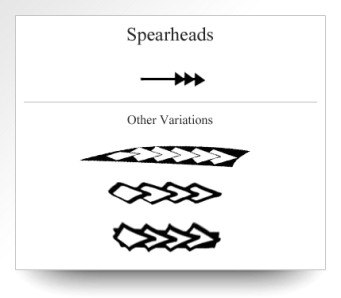
The Sun: The sun symbolizes many things in different cultures. In Polynesian culture it represents riches, brilliance, grandness, leadership. The sun’s periodic rising is considered eternity, sign of rebirth.
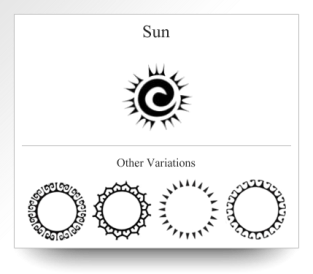
Enata: Enatas are human figures in Polynesian tattoos used to represent men, women, and gods. This word came from the Marquesan language. Depending on where the enata(s) are placed, and what is in the space around them, they represent life experiences, birth, rank in society, relationships, actions, stories. They can be placed within a bigger tattoo to represent people and their relations. For example, a row of enatas in a semi-circle often represent the sky, and the ancestors guarding their descendants on earth. A reverse enata symbolizes an enemy.
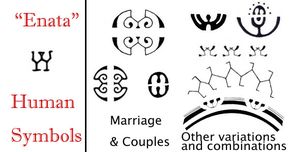
Seashells: Symbolize shield, protection, intimacy.
Marquesan Cross: Symbolizes the balance between all the elements and maintaining universal harmony.
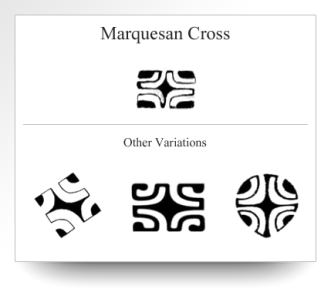
So you can see, every detail inside the tattoo held significance to the Polynesians. This information of course isn’t everything about Polynesian tattoos. There’s so much more that I’ve yet to learn, but I found this information really interesting because before I saw tribal tattoos all the time, but I never knew the deeper meaning behind the art until I started doing more research and reading and got my own tattoo. I hope you guys found this information interesting, and the next time you see a tribal tattoo, you can appreciate knowing what every little thing represents. 🙂
Also this is my new tattoo!
